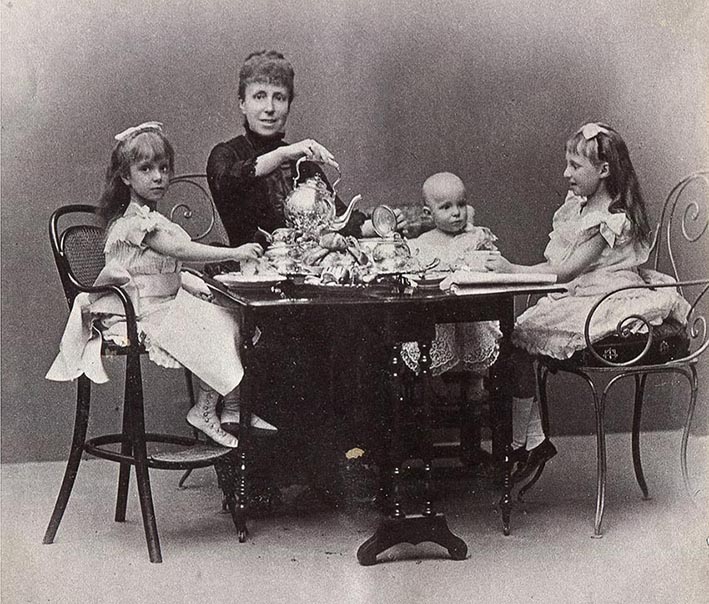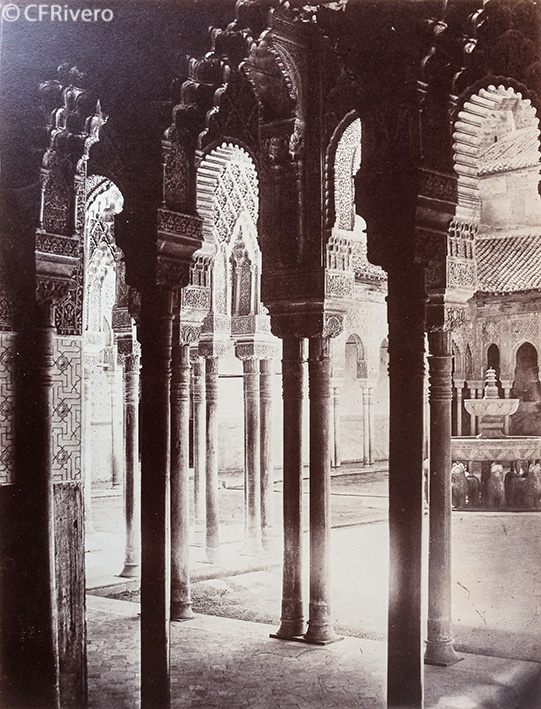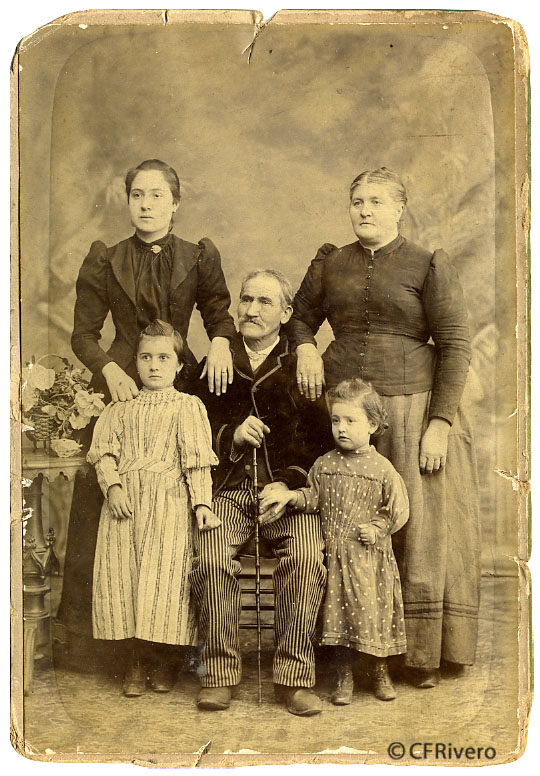There are pivotal moments in the life of every human being, those that indicate a before and after; This is what happened to Juan Antonio Fernández Rivero - an economist from Malaga born in 1956 - when the book “The history of photography in Spain from its origins to 1900” came into his hands, the work of the North American Lee Fontanella published in 1981. At that time , JAFR had started a collection of old postcards from his homeland and those pages and images sparked his interest in expanding his horizons towards photography, first the local one and already on that path, the inevitable, the Spanish one in general and the international one.
Those first steps took Juan Antonio and his wife, María Teresa García Ballesteros, a librarian by profession, to the current moment, with more than 75,000 works collected, from daguerreotypes onwards - the oldest piece dates from 1842 -, with all the techniques and supports used over time by this discipline and art.
«Today – its creator tells us – we intend for the Collection to cover the entire broad spectrum of photographic manifestations in its early years and to be able to contribute to the construction of the history of photography in Spain, it also wants to be didactic and be a useful instrument for learning the history of photography, and finally we want to fulfill a museum mission, in the double sense of conservation and dissemination of photographic heritage.
«In the Collection there are outstanding sections - María Teresa and Juan Antonio detail in unison -, such as those dedicated to Malaga, or to stereoscopic photography, but in general its composition tries to reflect what the photographic phenomenon has been since its appearance. For example, we take care of the acquisition of complete period albums, before they have been dismantled for sale, both family albums, from the cartes de visita era, and travel albums. There is also a section of books with original photographs attached, a format that had its day before photomechanical methods of reproducing photographs became widespread. The daguerreotype section is one of the most complete in Spain, with more than 130 specimens. Also included in the collection is a significant number of postcards from the early 20th century and a certain number of objects related to photographic history, such as cameras and accessories, albums, stereoscopic viewers, period frames, as well as a large specialized library. .
The initiative transcends the gesture of collecting and moves through a museographic conception that requires ordering, classifying, studying the images, the authors, the techniques, the materials and, in addition, preserving that treasure that, obviously, already has its own flight. Among other achievements linked to the topic, the books written by Fernández Rivero stand out: “From Málaga... Memories”, which is a history of the postcard in Málaga, and “History of photography in Málaga during the 19th century”, both edited in 1994; “Three dimensions in the history of photography. The stereoscopic image”, from 2004, and published in 2017, “Discovering Luis Masson”, one of the most prominent Spanish photographers of the 19th century. The researcher's personality, he acknowledges, is what fueled his work as a collector, initiated "out of pure necessity and due to the scarcity of collections available for research at that time." Without the prior work of collecting, we could not have produced these publications.
Luis Masson, Seville, Alcázar, Patio de las Doncellas, around 1860. Photography: Courtesy Fernández Rivero Collection.
In the field of research, their extensive reservoir allowed them to verify the presence of Enrique Facio from Malaga covering the so-called African War in 1859, the first war chronicler of Spanish origin. The conflict mobilized the patriotic spirit of Spain and the media took care of witnessing the war events from the scenes themselves. This is what the editors Gaspar and Roig did, responsible for the illustrated weekly El Museo Universal, who hired the literary man Pedro Antonio de Alarcón, a writer of genius who traveled to the battlefields and in addition to writing his texts - which he even published in a newspaper edited by himself in Tetouan - he also hired a photographer to enrich his deliveries.
«The photographer chosen by Alarcón - explains Juan Antonio Fernández Rivero [1] - turned out to be Enrique Facio Fialo (1833-1897), a 24-year-old young man, born in Malaga, although of Italian origin. His family was dedicated to commerce and he was fond of painting and photography, but without becoming a professional, that is, he did not have a permanent establishment. He had, therefore, all the qualities to venture into a company like the one Alarcón offered him. Facio's recruitment must have occurred in the first days of December, since we have already mentioned that in the advertisement of La Iberia de Gaspar y Roig dated November 28, nothing appears yet about the photographer and taking into account that the telegraph was already working in Spain, at least among the provincial capitals, and since the photographer's announcement already appears in the December 7 announcement, it can easily be deduced that Alarcón should have finalized his agreement with Facio a few days before. Alarcón will never mention Facio by his name, and there are still few references to the photographer that he makes in his writings of the time, and when he does it is usually discreet if not directly pejorative. It is evident that Facio was not the Spanish Fenton, which, together with the limited development of photography in Spain, as well as its limited artistic and social consideration, at least in comparison with France and England, meant that the status of photographer did not greatly exceed that of of service personnel. However, what is surprising is that in 1880, when Alarcón prefaced the new edition of his Diario [...], a moment in which photography already occupied a very different place in Spanish society, the writer boasted of having been he who introduced photography to Morocco, but continues without giving the name of Facio” [2].
The investigations, we express it, were reflected in the editorial field and also, in a blog created in October 2012 (http://cfrivero.blog ), today with more than two hundred entries referring to works from the collection, to special topics - for example, Spanish stereoscopic views by Frank M. Good (includes the catalog with all its images) and A walk through 19th century Mallorca in the CFRivero photographs - and to the exhibitions where the collection has been present. “So far we have had half a million visits,” they proudly inform us, warning that it is the communication channel with the greatest reach.
Among the exhibitions organized by the Collection itself, the following stand out:
– Museum of Fine Arts of Seville with the title Discovering Luis Masson, photographer in 19th century Spain, from June to September 2021, an exhibition that was initially presented at the Andalusian Center of Photography in Almería (January-March 2018) and at the Lázaro Galdiano Museum in Madrid, within the framework of FotoEspaña, (June-August 2018).
– Photography and Space, towards 3D vision, dedicated to the stereoscopic phenomenon, which was presented in Ronda, Cádiz and Almería between 2010 and 2011.
– Málaga from the Farola 1852-1900, in the Corte Inglés cultural area.
– Daily life in Malaga during the Belle Epoque in 2015 at the City Museum.
– Construction of Larios Street in the Economic Society of Friends of the Country in 2016.
– In 2015 at the Córdoba Photography Biennial: Magic and reality, 19th century photography in the Fernández Rivero Collection.
– At the “La Térmica” cultural center (Málaga) in 2018: Málaga from its watchtowers, 1854-1925.
They also tell us that they have provided works for multiple exhibitions held in different institutions, such as the Picasso Museum in Malaga and also in this city, the Carmen Thyssen; to the great exhibition on Jean Laurent that was presented at the Royal Academy of Fine Arts of San Fernando in Madrid, and to the one dedicated to Jules Ainaud that is currently exhibited at the Mapfre Foundation in Barcelona.
Córdoba, Argentina, Cloister of Santo Domingo, with monks and gardeners. Unknown author. Albumen, 1880/90. Photography: Courtesy Fernández Rivero Collection.
Such an extensive repertoire, you can imagine, includes photographs from different parts of the world and of course, among them -although for Fernández Rivero only in a testimonial way-, they preserve a small set of images from Argentina and Uruguay, among other Latin American countries.
H.- What destination do you imagine for the collection?
JAFR- Our wish would be to reach some type of agreement with a large institution, public or private, that would like to house and manage one of the best collections of historical photography that exists in Spain. A collection formed over 40 years, piece by piece, always choosing what best suited the spirit and purposes of the Collection, a collection that, thanks to our research work and the knowledge acquired over so many years, is complemented for a great level of added information.
And Juan Antonio Fernández Rivero closes his opinion by recognizing that, "even with the limitations of a private collection, we consider that photographic collections should not be hidden and that is why we try to make them known."
Notes:
1. In his collection he has 10 vintage images of this author.
2. J. A. Fernández Rivero, La fotografía militar en la Guerra de África: Enrique Facio, en Ceuta y la Guerra de África de 1859 – 1860, XII Jornadas de Historia de Ceuta, 2011, pp. 459-492.



